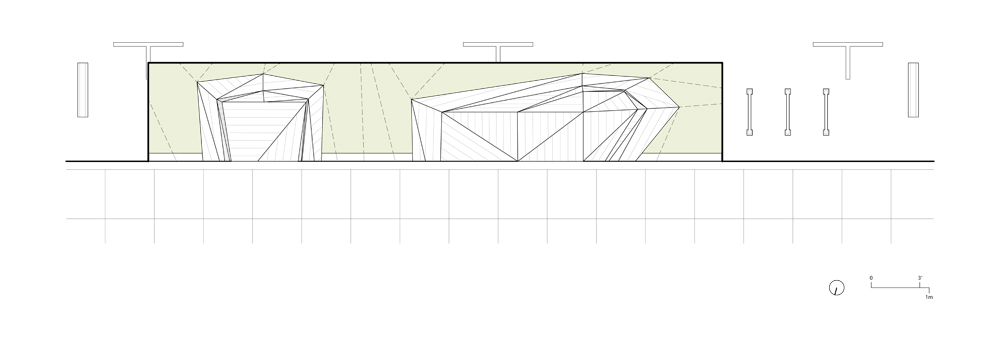Ourcadia, is a geometric and grass-covered parklet in San Francisco, California designed by Ogrydziak Prillinger Architects. The parklet is a synthetic landscape replacing two parking spaces in the Tenderloin.
It serves as a casual resting spot in the urban center offering a place to grab a seat while enjoying a quick bite from one of the adjacent restaurants along the street. The project was made possible by a grass roots campaign that came together to inject a memory of nature into a street in the Tenderloin, the city’s densest neighborhood. They were searching for an informal communal space and a patch of wildness to counteract the city’s swaths of concrete, brick and steel. The Parklet program raises the question of the territory in the city given over to cars – the parking lane — and imagines it instead as a public space. It is only one step further to imagine the streets as fully lined with ribbon-like parks, a mirror of nature infiltrating the city.
 OURCADIA PARKLET GROWTH DIAGRAM
OURCADIA PARKLET GROWTH DIAGRAM
OURCADIA PARKLET FLOOR PLAN
OURCADIA PARKLET PROGRAM
OURCADIA is an incomplete model park gesturing towards this fantasy. The organic forms offer a slice of ‘nature’ in contrast to the regular geometry of the urban streetscape, while the varied sloping surfaces are open to interpretation with regard to use. Raised garden beds envelope two seating areas, creating immersive green clearings in the hard-edged Post Street canyon. Initially planted with grass to allow the soil to settle, the parklet is now a varied landscape of drought-tolerant tall grasses, succulents and edible plants.
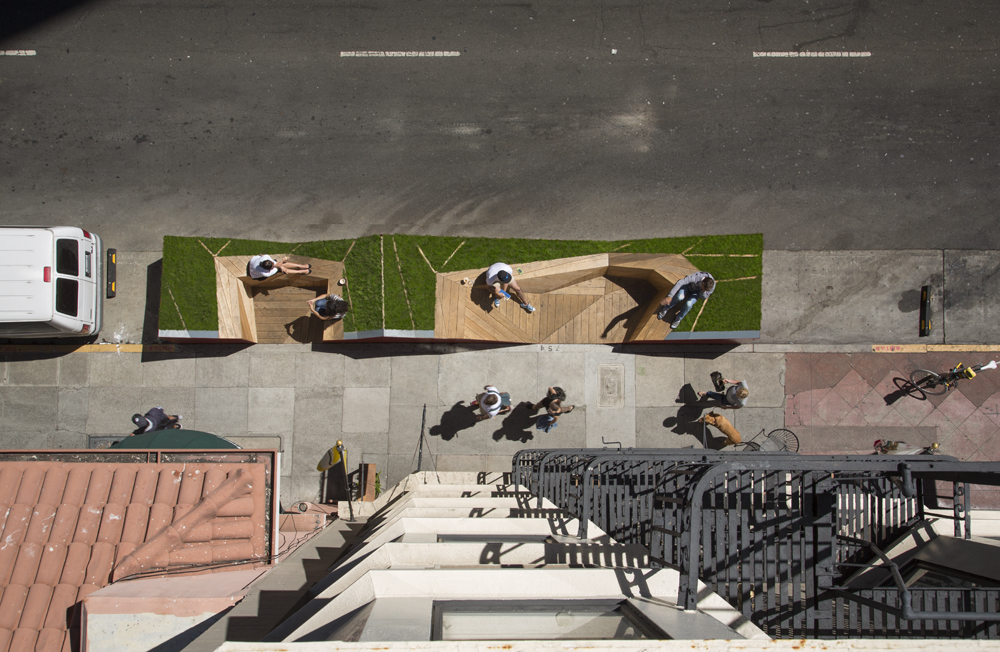
OURCADIA is part of a series of projects that OPA has been developing which use computational design to control the behavior of slopes. Within this context, OURCADIA was designed to optimize four types of desirable, objectively definable slopes: slopes for sitting, perching, lounging, and planting. OPA loosely defined geometric parameters for each of these conditions, then developed a growth simulation. The form emerges from a combination of programmatic goals and a little (natural!) randomness.
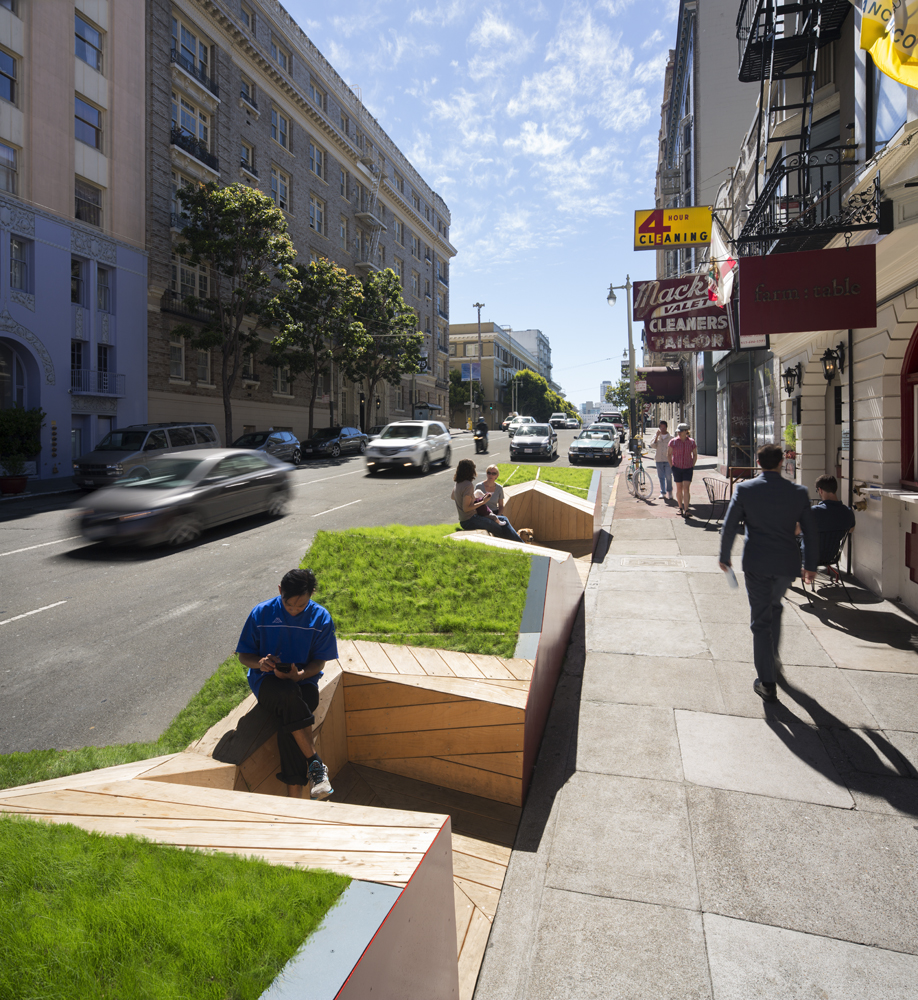
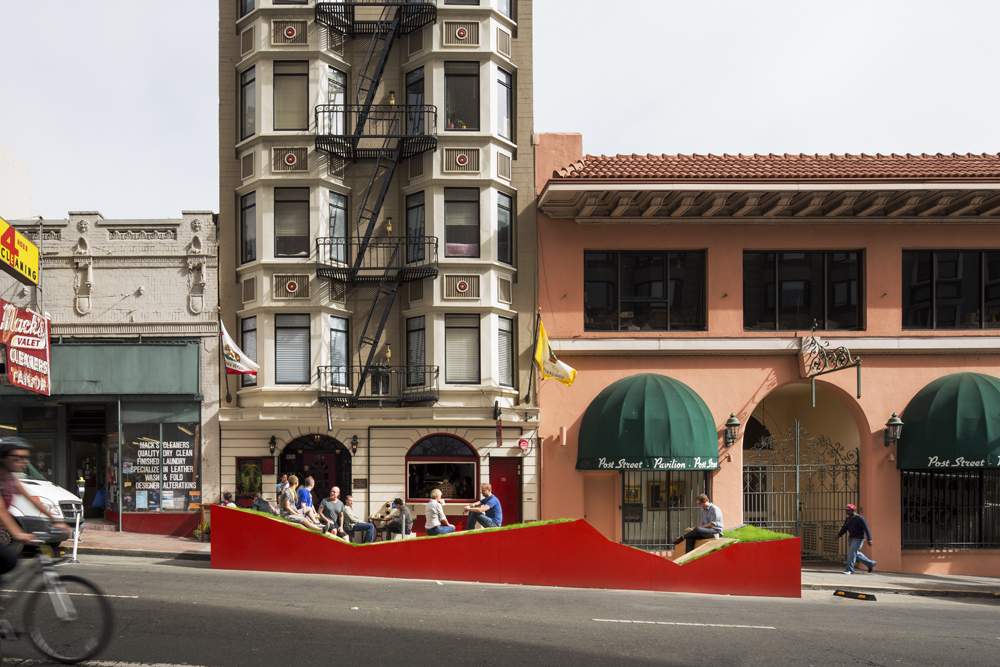
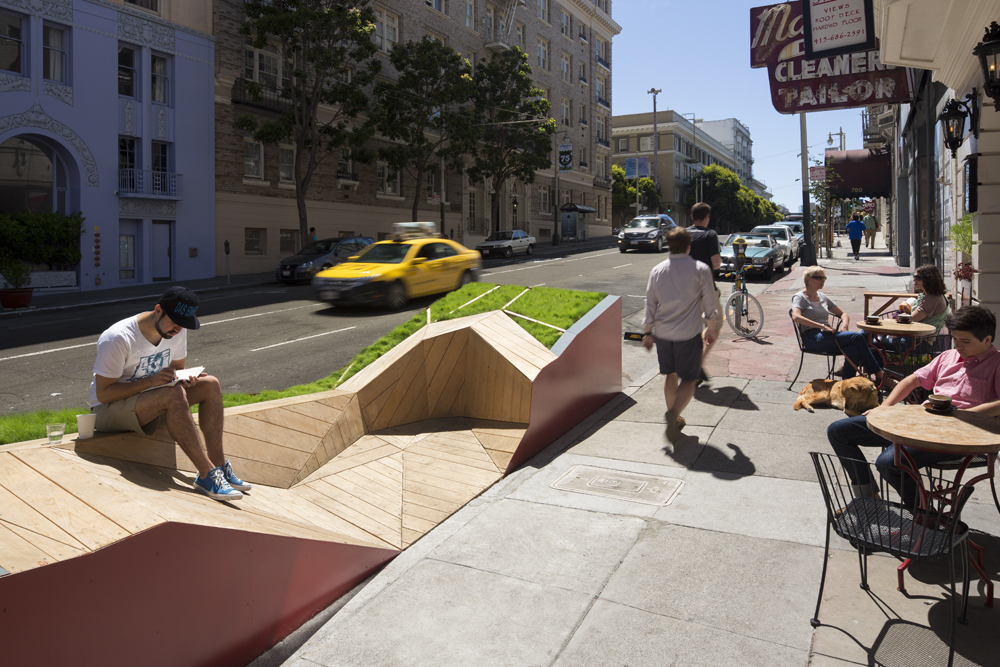
ALL IMAGES AND DRAWINGS COURTESY OPARCH
PROJECT DETAILS
- CLIENT: farm:table
- LOCATION: 754 Post Street, San Francisco, California
- PROGRAM: 22 sqm Parklet (replaces two parking spots)
- AWARDS: AIA San Francisco, 2013 Architecture Citation
- EXHIBITIONS: Public Interest Design, TED2013 Exhibit
- PROJECT TEAM: General Contractor: Forsythe General Contractors, Structural Consulting: Buro Happold



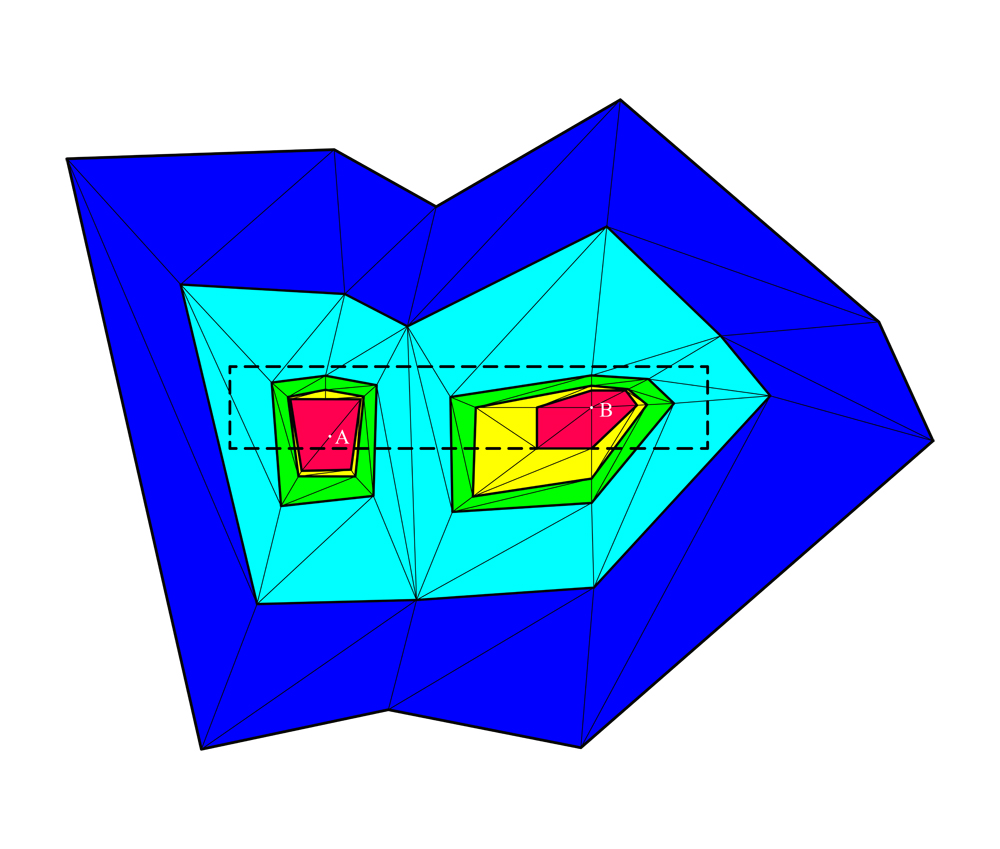 OURCADIA PARKLET GROWTH DIAGRAM
OURCADIA PARKLET GROWTH DIAGRAM